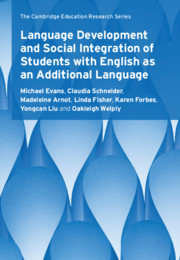Book contents
- Language Development and Social Integration of Students with English as an Additional Language
- Language Development and Social Integration of Students with English as an Additional Language
- Copyright page
- Contents
- Figures
- Tables
- Acknowledgements
- 1 Introduction
- 2 Education and Social Integration for EAL Students
- 3 The International, National and Regional Policy Context of Social Integration in Schools
- 4 The Methodology of Researching EAL
- 5 Progression in Language, Learning and Social Integration
- 6 Towards an Inclusive Pedagogy for EAL in the Multilingual Classroom
- 7 Rethinking Home–School Communication for Parents of Migrant Children
- 8 Conclusion
- References
- Index
6 - Towards an Inclusive Pedagogy for EAL in the Multilingual Classroom
Principles and Practices
Published online by Cambridge University Press: 03 July 2020
- Language Development and Social Integration of Students with English as an Additional Language
- Language Development and Social Integration of Students with English as an Additional Language
- Copyright page
- Contents
- Figures
- Tables
- Acknowledgements
- 1 Introduction
- 2 Education and Social Integration for EAL Students
- 3 The International, National and Regional Policy Context of Social Integration in Schools
- 4 The Methodology of Researching EAL
- 5 Progression in Language, Learning and Social Integration
- 6 Towards an Inclusive Pedagogy for EAL in the Multilingual Classroom
- 7 Rethinking Home–School Communication for Parents of Migrant Children
- 8 Conclusion
- References
- Index
Summary
This chapter introduces the framework of a model of inclusive pedagogy that consists of four key dimensions: attitudinal inclusion, academic inclusion, linguistic inclusion and social inclusion. We illustrate the issues through reference to teacher data elicited at the project secondary schools. We discuss the prevalence of linguistic diversity in English schools that makes teachers’ knowledge about such language diversity essential to effectiveness in the classroom and, in light of this, we identify key forms of ‘bilingual assistance’ which support EAL pedagogy. The final section of the chapter presents an outline of a teacher knowledge framework which we argue needs to form the basis of teacher professional development in the EAL context.
Keywords
- Type
- Chapter
- Information
- Language Development and Social Integration of Students with English as an Additional Language , pp. 131 - 158Publisher: Cambridge University PressPrint publication year: 2020

